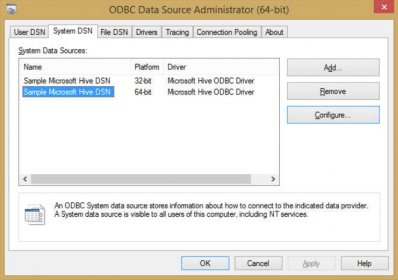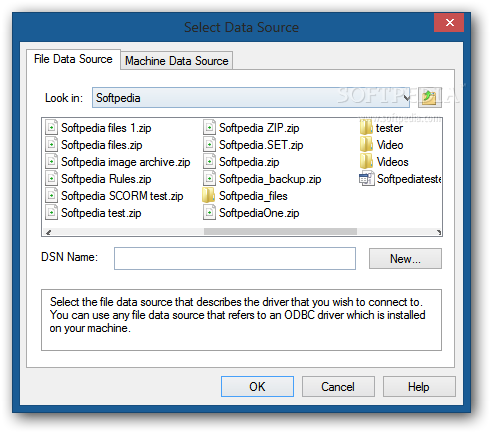

- #MICROSOFT ODBC DRIVER FOR SQL SERVER AND ORACLE SOFTWARE#
- #MICROSOFT ODBC DRIVER FOR SQL SERVER AND ORACLE CODE#
ODBC APIs supported in Oracle Database 12 c Release 1 (12.1.0.1) This identifier returns SQLULEN value, which has all the column properties, shown as follows: Starting from Oracle Database 12 c Release 1 (12.1.0.1), Oracle ODBC Driver supports a new driver specific field identifier SQL_ORCLATTR_COLUMN_PROP, which returns the attributes of the column. This property is read-only and returns SQL_TRUE if the column is auto increment otherwise, it returns SQL_FALSE. Starting from Oracle Database 12 c Release 1 (12.1.0.1), Oracle supports auto increment columns so the Oracle ODBC Driver has extended the same support through the existing SQLColAttribute() identifier SQL_COLUMN_AUTO_INCREMENT.

See Oracle Call Interface Programmer's Guide for more information about auto increment: You can use this feature by including Oracle ODBC driver specific header file sqora.h in the application. See Oracle Database Migration Guide for more information about implicit results support by Oracle Database.Įxtended support of SQLColAttribute() field identifiers to support Oracle Database auto increment feature. This support eases any third party ODBC application, which migrated to Oracle and wants to use this same functionality that was provided by their previous vendors. Oracle ODBC driver now supports executing a stored procedure, which can return implicit results without using RefCursor. After error translation is registered, then ODBC application users can enable this option, SQLTranslateErrors = T, to receive native errors according to their registration.įor more information on SQL Translation Framework, see Oracle Database Migration Guide, in particular information about SQL Translation Framework Architecture and Overview, Translation Framework installation and configuration, and migration examples. SQL_TRANSLATE_ERRORS = Īny migrated third party ODBC application, which is using the SQL Translation Framework feature, expects that errors returned by the server to be in their native database format, then users can register their translation of errors with the SQL Translation Profile in Oracle Database running in SQL Translation Framework mode. New parameters in the odbc.ini file or connection level attributes: See Oracle Database PL/SQL Language Reference and Oracle Database SQL Language Reference for information about creating 32 KB columns. Oracle ODBC Driver now supports 32 KB data columns with VARCHAR2, NVARCHAR2 and RAW data.
#MICROSOFT ODBC DRIVER FOR SQL SERVER AND ORACLE SOFTWARE#
New Features for Oracle ODBC Driver Release 10.1.0.2.0Ĭhanges for Oracle ODBC Driver Release 10.1.0.2.0įeatures of the Oracle ODBC Driver Release 12.1.0.1.0 software for the Microsoft Windows Server 2008, Windows Server 2008 R2, Windows 7, Windows 8, Windows Server 2012, Linux X86-64 (32/64 bit), Sun Solaris SPARC64 (32,64 bit), IBM AIX 5L (32,64 bit), Sun Solaris X64 (32,64 bit), HPUX IA64 (32,64 bit), ZLinux (32,64 bit) operating systems are described as follows: New Features for Oracle ODBC Driver Release 11.1.0.1.0 New Features for Oracle ODBC Driver Release 11.2.0.1.0 New Features for Oracle ODBC Driver Release 12.1.0.1.0 Figure 21-1 shows an ODBC application accessing three separate databases. The ODBC Driver accesses the database over a network communications link using the database API. Still using the ODBC API, the Driver Manager makes a call to the ODBC Driver.

The Driver Manager can be either the Microsoft Driver Manager or the unixODBC Driver Manager. The model begins with an ODBC application making a call to the Driver Manager through the ODBC application program interface (API). SQL syntax based on the SQL-99 specification.Ī standard way to connect to and log in to a data source.Ī standard representation for data types.įigure 21-1 shows the components of the ODBC model. The ODBC interface defines the following:Ī library of ODBC function calls that allows an application to connect to a data source, execute structured query language (SQL) statements, and retrieve results. Therefore, the application can access any data source for which a database driver exists. A database driver is a dynamic-link library that an application can invoke on demand to gain access to a particular data source. A database driver links the application to a specific data source.

#MICROSOFT ODBC DRIVER FOR SQL SERVER AND ORACLE CODE#
The application's source code does not have to be recompiled for each data source. Open Database Connectivity (ODBC) provides a standard interface that allows one application to access many different data sources.


 0 kommentar(er)
0 kommentar(er)
